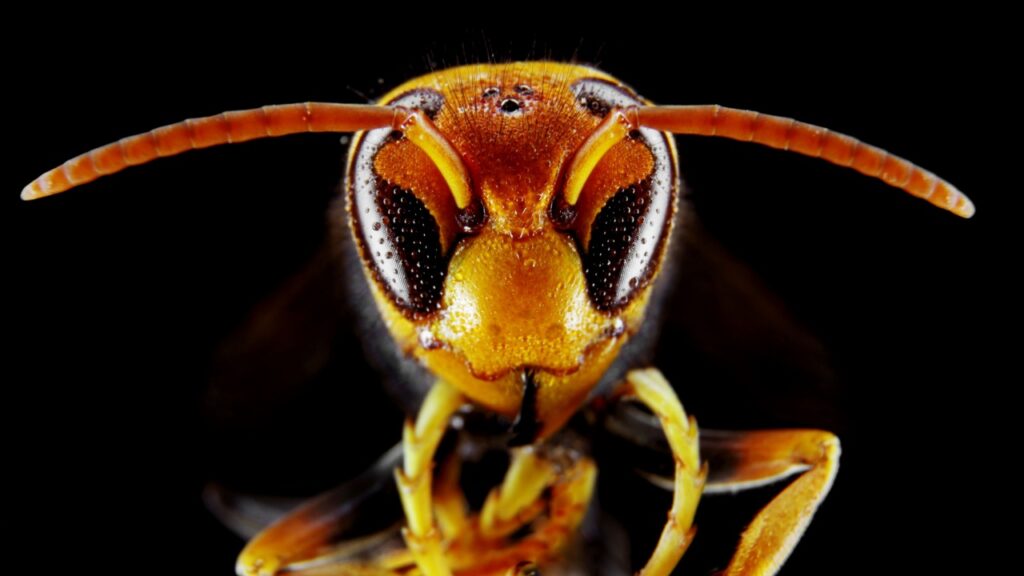Discovering the world of wasps can be both fascinating and insightful. These insects, often misunderstood and sometimes feared, play crucial roles in our ecosystems. From delicate pollinators to formidable hunters, wasps exhibit a diverse range of behaviors that contribute to the balance of nature.
What makes these 18 wasp species stand out is their unique adaptations and the vital functions they serve in the environment. Learning about wasps like the predatory assassin wasps or the commonly known yellow jackets not only broadens your understanding of these insects but also highlights their importance in maintaining ecological health. This article aims to shed light on these intriguing wasp species and their contributions to the natural world.
1. Assassin Wasp
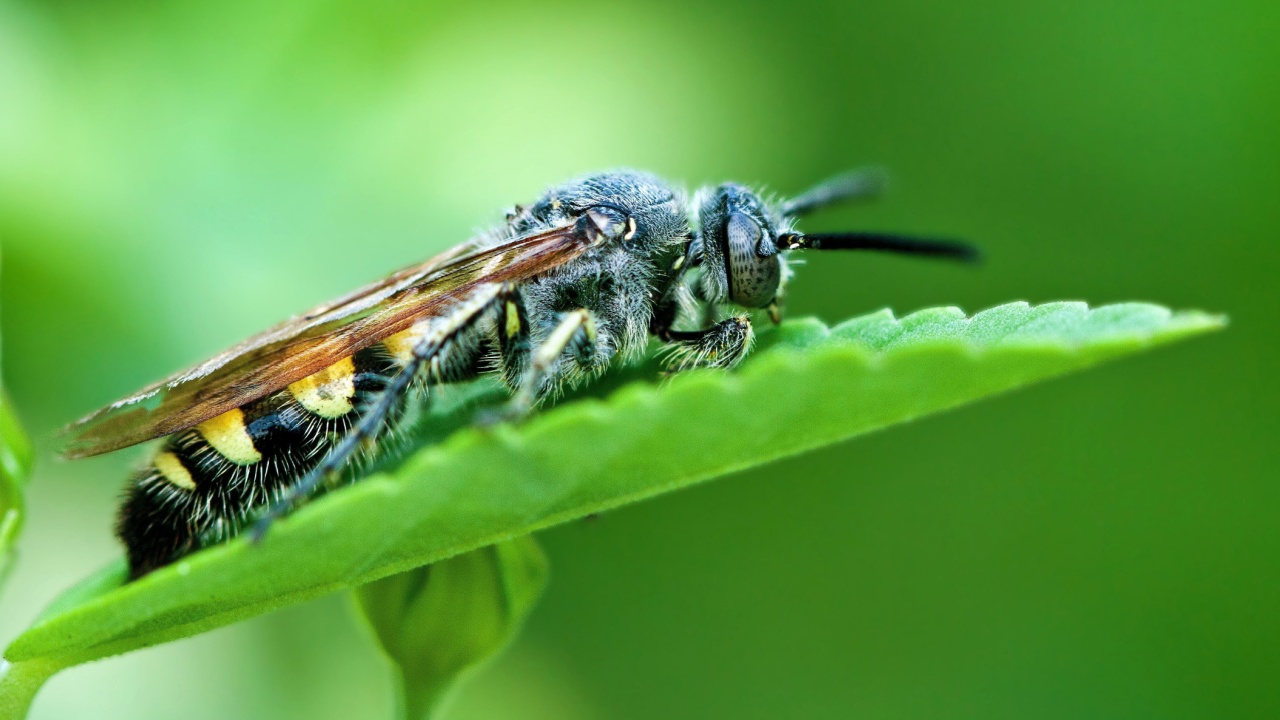
Assassin Wasps are a fascinating example of nature’s complexity. Their bodies are often elongated, making it easier for them to navigate their environment. You can find these wasps in various colors, from browns and greens to vibrant reds and yellows.
One unique feature of the Assassin Wasp is its ability to transmit diseases. This makes them not only intriguing but also potentially dangerous in some situations.
2. Yellow Jacket
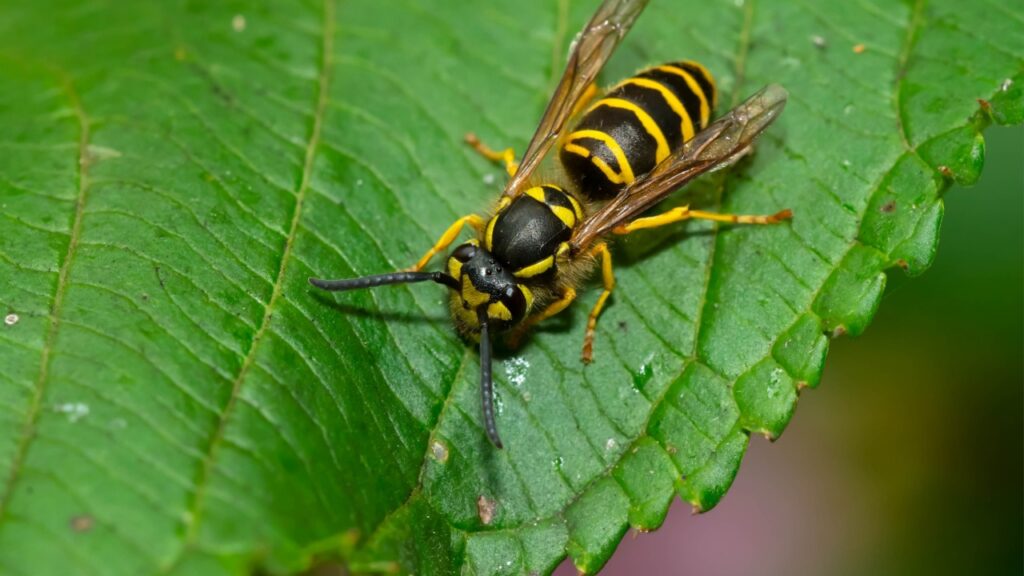
Yellow jackets are one of the most recognizable wasp species, thanks to their vivid black-and-yellow striped bodies. You can often spot them around picnic areas in late summer, attracted to sugary foods and drinks.
Unlike honey bees, yellow jackets can sting multiple times, which makes them more dangerous, especially if their nest is disturbed. Their sting is painful and can cause allergic reactions in some people.
These wasps live in large colonies that include a queen, workers, and male drones. The nests are made from chewed wood fibers, creating a paper-like structure, usually found in trees, bushes, or sometimes even underground.
3. Hornet
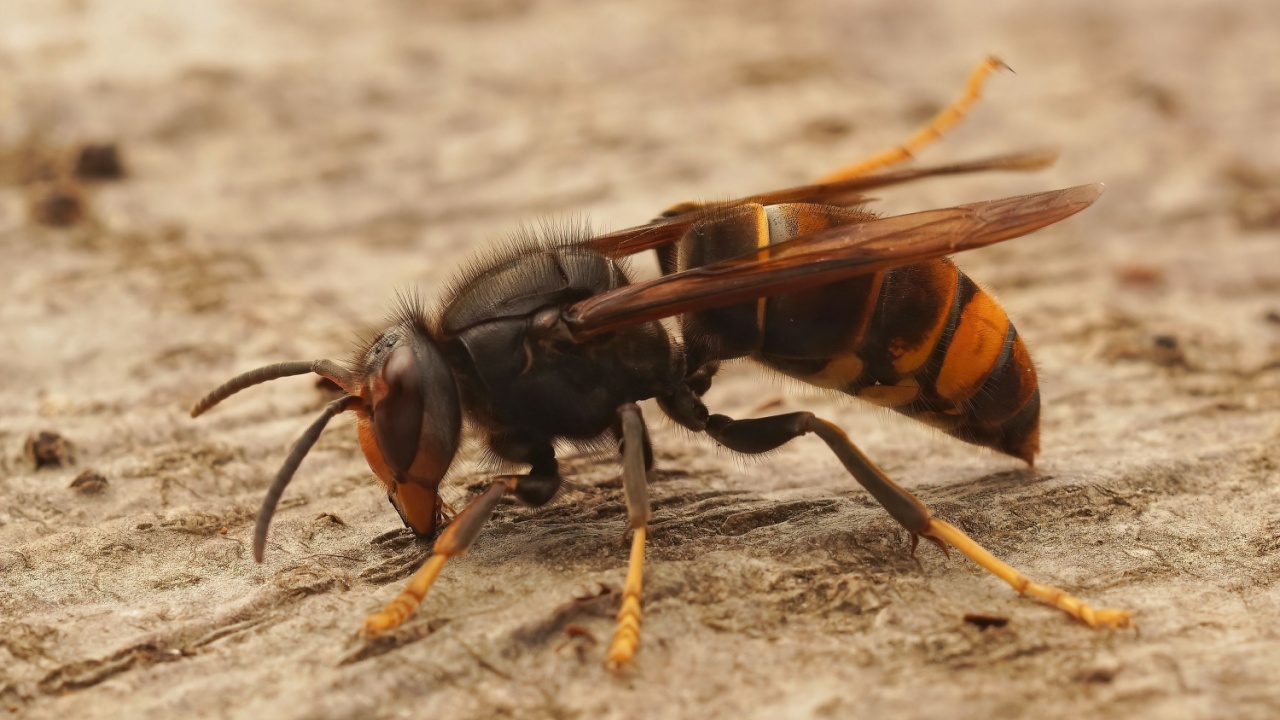
Hornets are a type of wasp known for their size and aggressive nature. They are generally larger than other wasps, with some species reaching lengths of up to two inches. You can identify hornets by their vivid color patterns, which often include combinations of yellow, brown, and black.
Their nests are made from a paper-like material and are often found in trees, shrubs, or under eaves. Hornets are important for controlling pest populations but can be dangerous if their nests are threatened.
4. Paper Wasp

Paper wasps are fascinating insects known for their distinctive nests, often found under the eaves of houses, in trees, or in other sheltered locations. These wasps get their name from the paper-like material they use to build their nests, which they make by chewing wood fibers and mixing them with their saliva.
You can recognize a paper wasp by its slender body and long legs, which dangle as it flies. They vary in color but are usually brown with yellow or red markings. Some species, like the Golden paper wasp, are more commonly found in the Western regions.
These wasps prey on caterpillars and other insects, which they paralyze and bring back to their nests to feed their larvae. Despite their potential for painful stings, paper wasps are generally not aggressive and are beneficial for controlling garden pests.
5. Mud Dauber
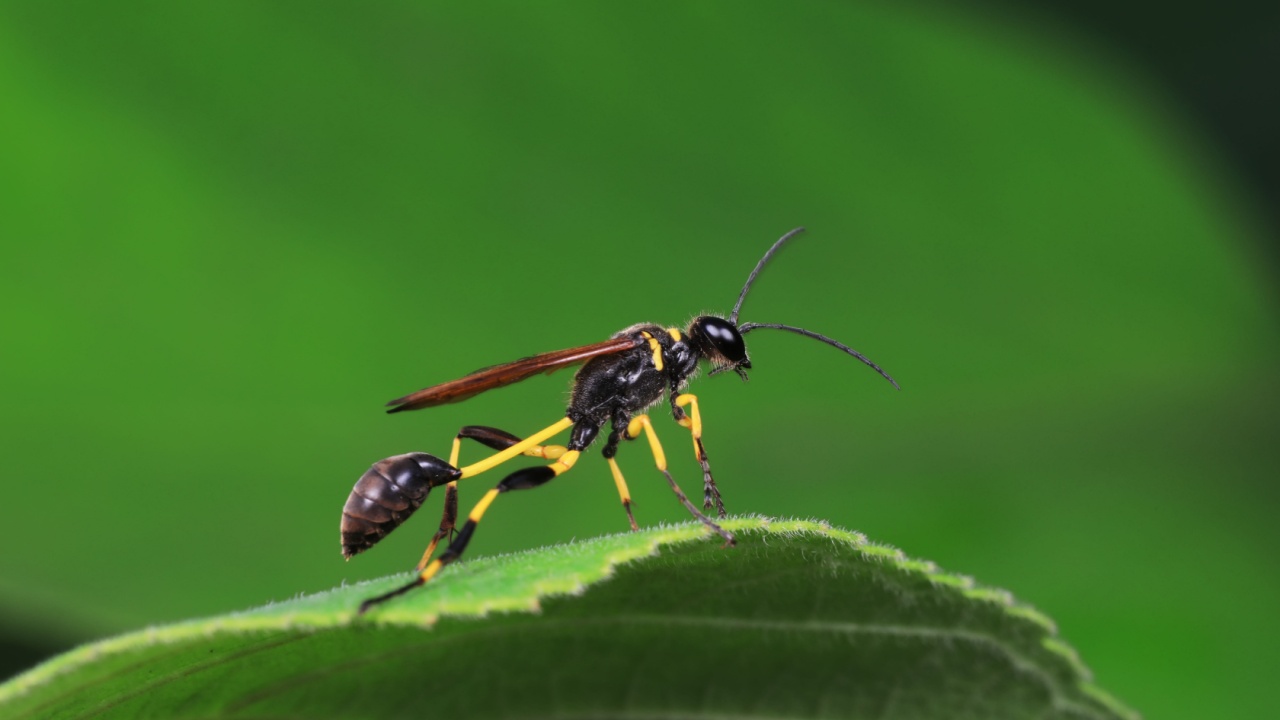
Mud dauber wasps are fascinating creatures known for their unique nesting habits. They use mud to build their nests, creating small, sealed chambers for their larvae. These nests can range from simple mounds to complex tube systems.
Each mud cell contains a single egg, along with a paralyzed spider or insect. The larvae feed on these captured prey until they are ready to emerge as adult wasps.
Mud daubers are generally solitary and are less aggressive compared to other wasps. They rarely sting humans unless provoked. Their ability to paralyze prey and construct intricate nests showcases their remarkable survival skills.
6. Cicada Killer
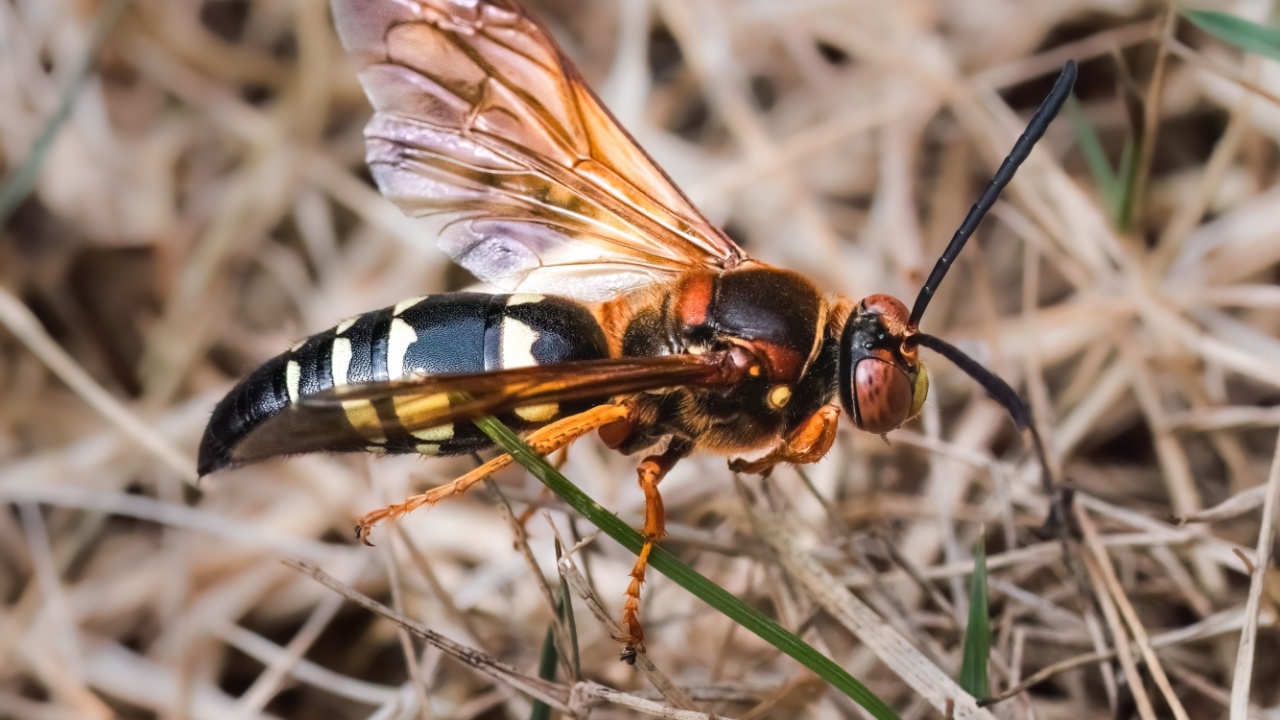
Cicada killers, also known as Sphecius speciosus, are fascinating wasps that you can find mainly in North America. They are large, solitary wasps that prey on cicadas.
These wasps are not aggressive towards humans. The female paralyzes cicadas with her sting and then carries them to her burrow. There, she lays an egg on the cicada’s body, providing food for her larva when it hatches.
7. Bald-faced Hornet
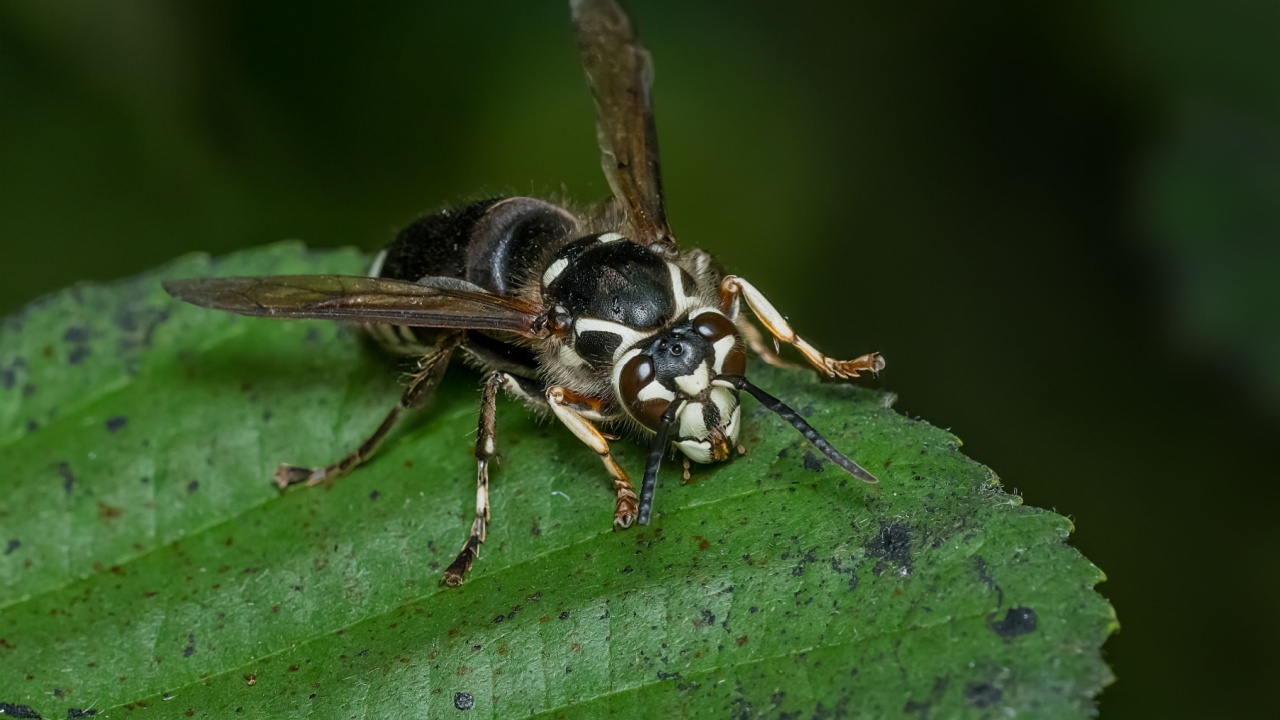
Bald-faced hornets are part of the wasp family, not true hornets. They have distinct black and white coloring on their faces, earning their unique name. These insects play a crucial role in controlling pest populations.
Despite their aggressive reputation, bald-faced hornets are important for the ecosystem. They build large, paper-like nests high in trees. These nests are often football-shaped and can house hundreds of workers.
While they can sting multiple times, bald-faced hornets typically only do so if they feel threatened. They feed on a variety of insects, making them beneficial for pest control around homes and gardens.
8. Potter Wasp

Potter wasps are fascinating insects with a distinct appearance. They are typically black or brown and feature yellow, red, orange, or white markings.
These wasps have narrow waists and can measure between 9 to 20 millimeters in length.
Known for their mud-shaped nests, potter wasps are skilled builders. You’ll often find their nests attached to twigs or other structures.
There are nearly 3,000 species of potter wasps, making them an incredibly diverse group.
9. Mexican Honey Wasp
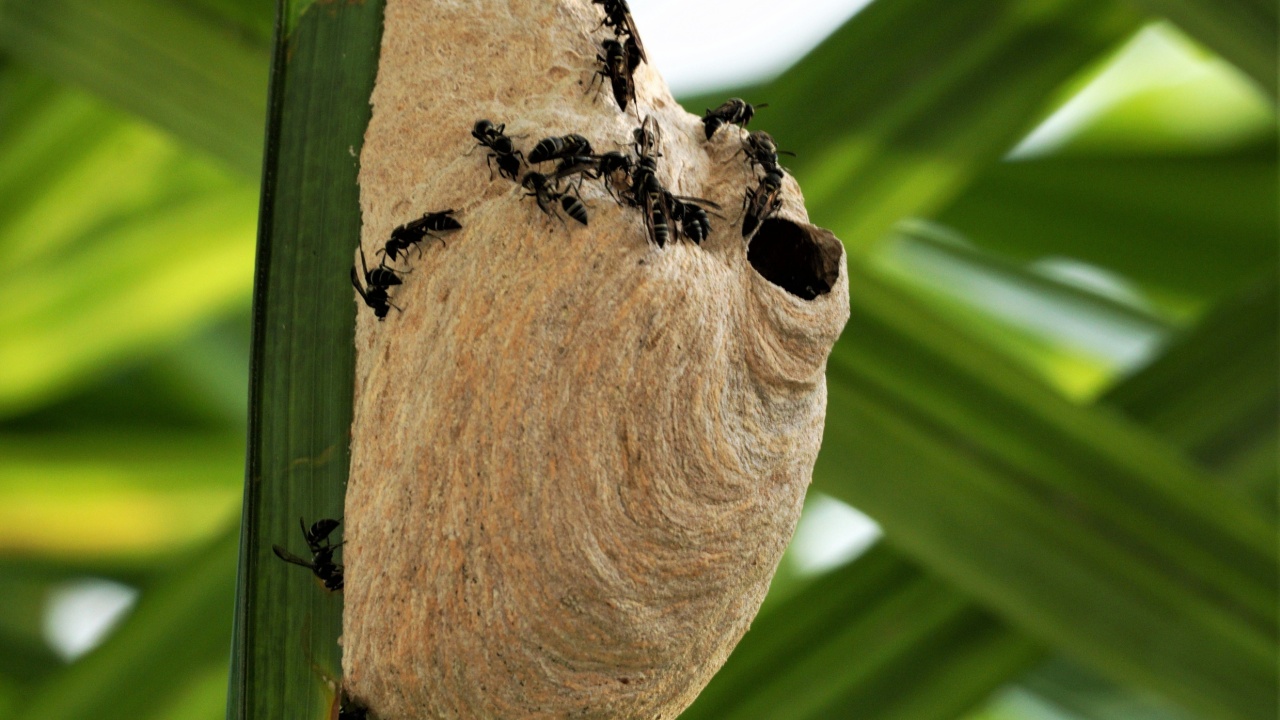
The Mexican honey wasp, or Brachygastra mellifica, is a unique wasp species that stands out for its ability to produce honey. Native to North America, these small wasps are about the size of a honey bee, ranging from 3/4 to 1 centimeter in length.
Mexican honey wasps are less aggressive compared to other wasp species. They live in large colonies and build paper nests high in tree canopies or shrubs. Their mainly black bodies are accented by yellow or orange abdominal bands.
10. Jewel Wasp
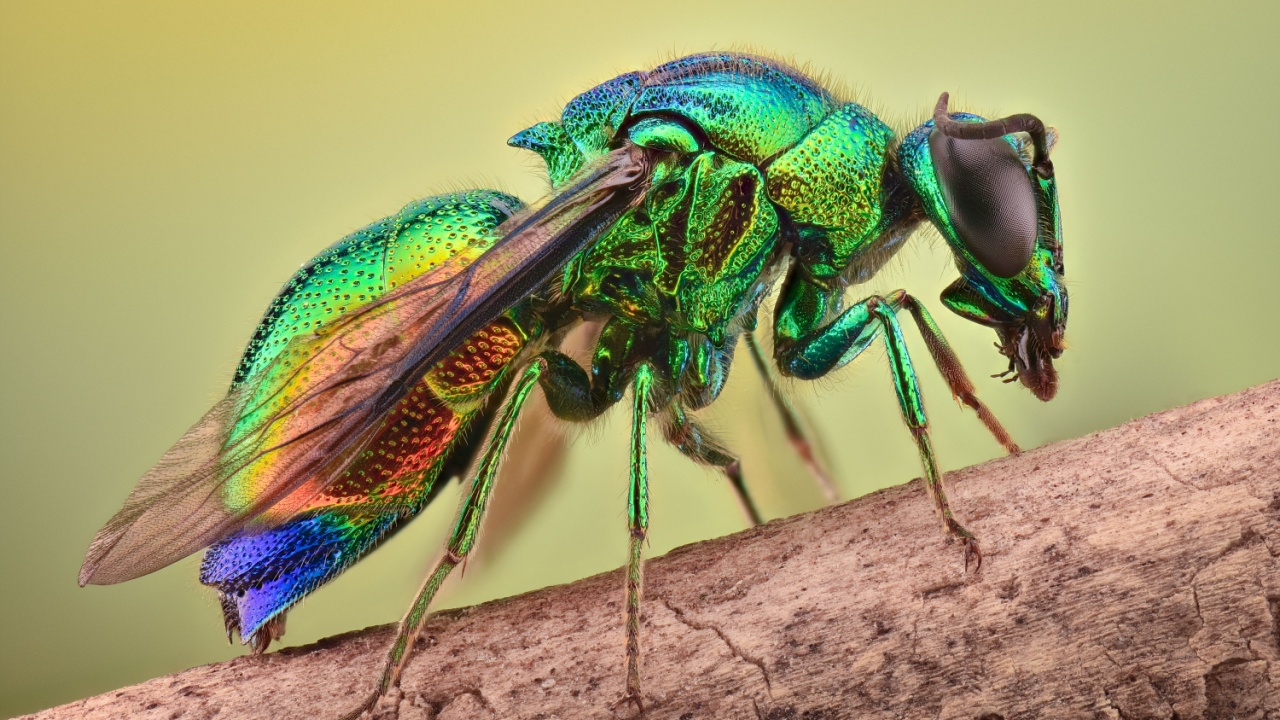
You may find the jewel wasp fascinating due to its unique life cycle and parasitic behavior. This small, emerald-colored insect is known for its ability to turn cockroaches into zombies.
The process begins with the jewel wasp injecting a special chemical blend into the cockroach’s brain. This doesn’t kill the cockroach but instead paralyzes and controls it. The cockroach then becomes a living host for the wasp’s larvae.
The larvae feed on the cockroach, ensuring they have fresh, living food. This method allows the wasp to provide a perfect environment for its offspring to grow. As gruesome as it may sound, this strategy shows an incredible adaptation in nature.
11. Sand Wasp
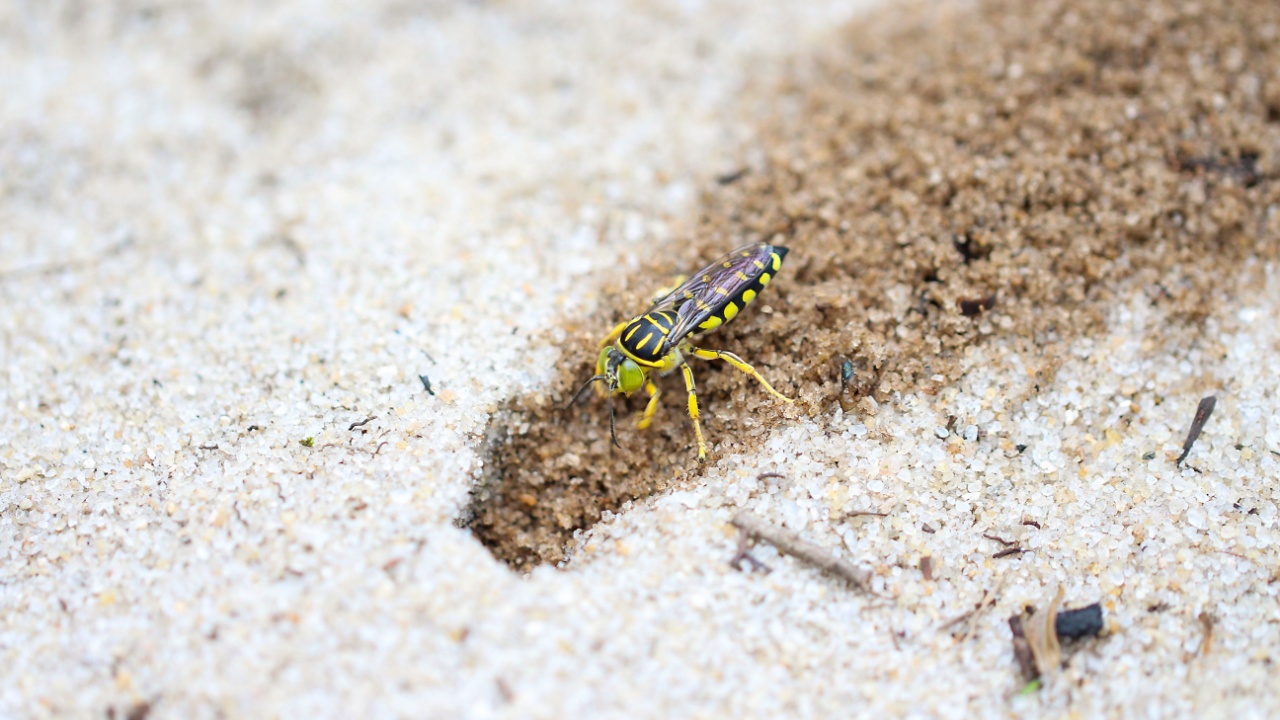
Sand wasps are solitary, stout-bodied insects around 2 to 2.5 cm long. Female sand wasps can quickly dig burrows in the soil to create nests for their larvae. While they may gather in groups when attacked, they do not form social colonies.
These wasps typically have black bodies with white, yellow, or green markings. Another identifying feature is their elongated triangular labrum. You can find sand wasps in various regions around the world.
12. Pompilid Wasp
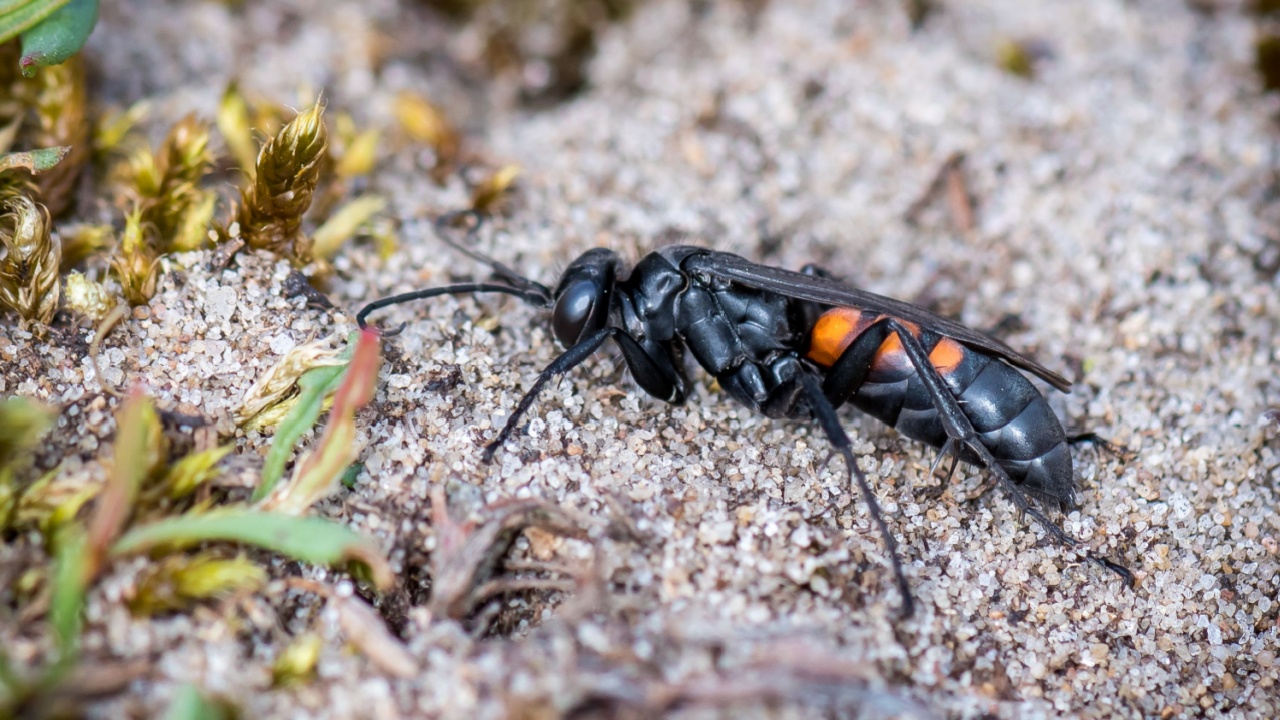
The Pompilid Wasp, commonly known as the spider wasp, belongs to the family Pompilidae. This family includes about 5,000 species that are found worldwide.
Pompilid Wasps are known for their hunting behavior. They specialize in paralyzing spiders to feed their larvae. These wasps are solitary insects, with most species capturing and subduing their prey before creating a nest.
These wasps play an important role in controlling spider populations, contributing to the balance of the ecosystem.
13. Spider Wasp
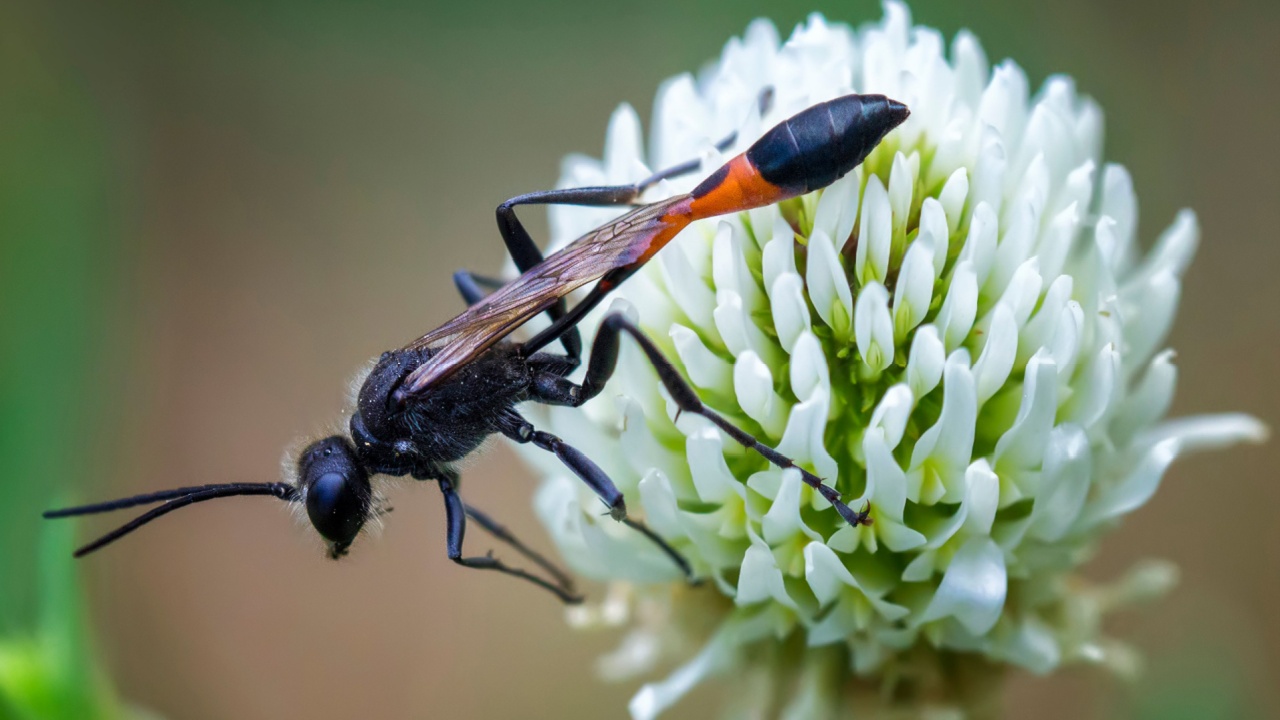
Spider wasps, known scientifically as Pompilidae, are fascinating insects recognized for their unique life cycle and hunting habits. These wasps are solitary and usually paralyze spiders to provide food for their larvae.
You can find about 5,000 species of spider wasps across the world. They vary in color, often displaying dark, metallic hues. Some species have distinct orange markings which make them easier to identify.
The spider wasp’s hunting method is intriguing. A female wasp will seek out a spider, paralyze it with a sting, and sometimes drag it to a burrow. There, she lays an egg on the spider’s abdomen. When the larva hatches, it feeds on the paralyzed spider.
Despite their aggressive hunting habits, spider wasps are generally not dangerous to humans. Their sting can be painful, but they don’t attack unless provoked. They play an important role in controlling spider populations, highlighting nature’s balance.
14. European Wasp
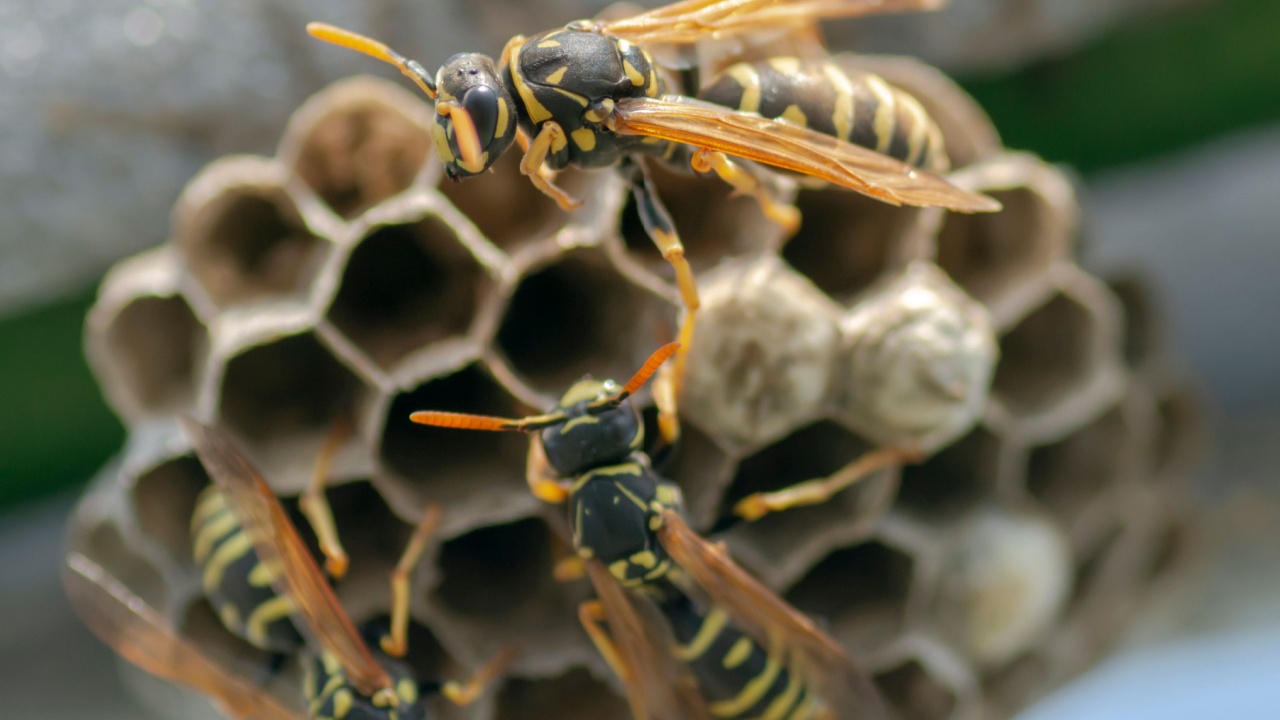
The European wasp, also known as Vespula germanica, is a remarkable species found in many parts of the world. Originally native to Europe, Northern Africa, and temperate Asia, it has spread to places like North America, South America, Australia, and South Africa.
European wasps are recognizable by their black and yellow coloration. They have a mass of around 74.1 mg and can grow up to 13 mm in length.
These insects are opportunistic predators and scavengers. They feed on live insects, dead animals, fruit, and even human food like meat and fish-based dishes. They can also be a nuisance at picnics, attracted to sugary drinks and fruits.
15. Red Wasp
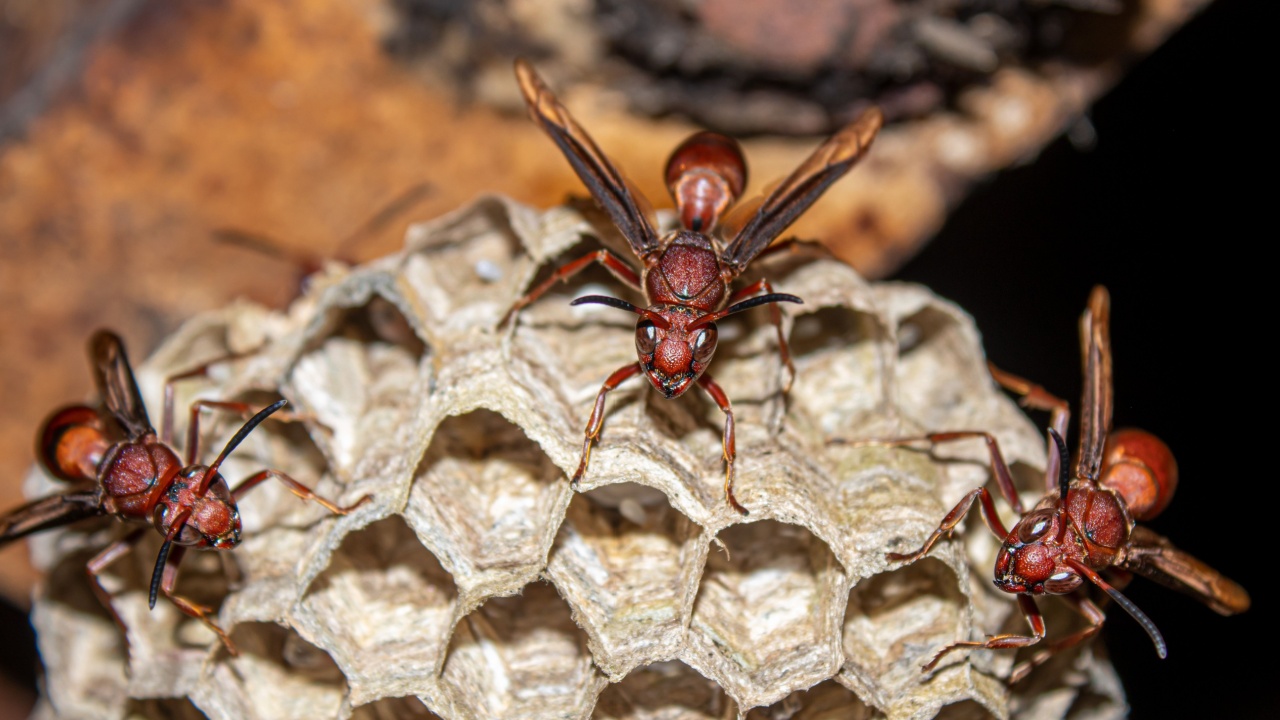
Red wasps are known for their slender waists and reddish coloring. These wasps have long black wings and measure about an inch long. They are common in the eastern United States, from Texas to Florida.
Females have a venomous sting, which can be painful. Red wasps build papery nests in sheltered areas. They are social insects and work together in their colonies. You can easily identify them by their rusty-red color and slender build.
16. Giant Ichneumon
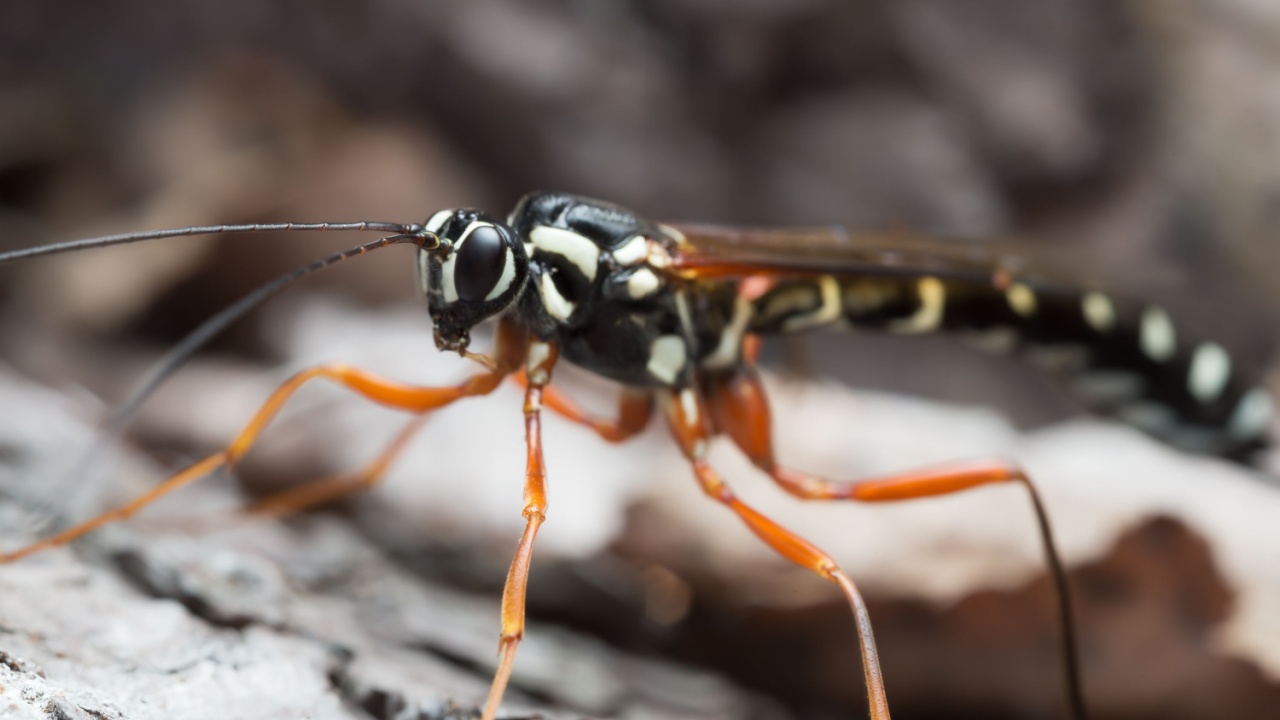
The giant ichneumon wasp is a standout in the insect world due to its size and unique behavior. One species, Megarhyssa macrurus, is known for its exceptionally long ovipositor, which can exceed 5 inches.
You can often identify this wasp by its black and yellow-orange stripes and transparent wings. Females use their long ovipositors to lay eggs inside wood-boring insects, particularly horntail wasps, which serve as hosts for their larvae.
Notorious for their role as parasitoids, giant ichneumons inject their eggs into the larvae of other insects. After hatching, the ichneumon larvae consume the host from the inside. Despite this gruesome process, they play a critical role in controlling pest populations, which benefits forest health.
17. Tarantula Hawk
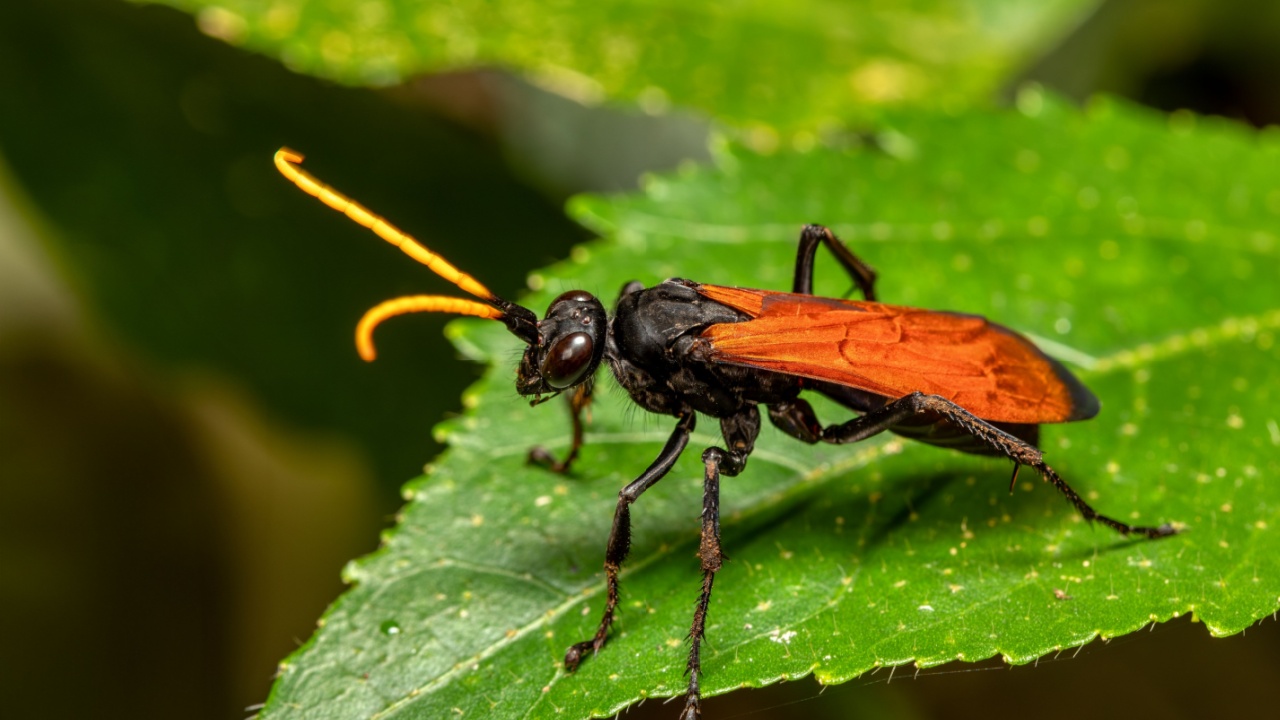
The Tarantula Hawk is among the largest wasps, with a body length of up to 2 inches. They are known for their vibrant metallic blue bodies and reddish-orange wings. You can often find them in habitats ranging from scrublands to deserts in the southwestern United States and Central America.
Female Tarantula Hawks are famous for hunting tarantulas. They paralyze these spiders with a powerful sting, then lay a single egg on the spider’s abdomen. When the egg hatches, the larva feeds on the still-living tarantula, slowly consuming it from the inside out.
The sting of a Tarantula Hawk is excruciatingly painful, rated among the most painful of any insect. Despite this, they are generally non-aggressive towards humans and only sting when provoked. Males typically feed on nectar, while females focus on capturing prey for their offspring.
18. Velvet Ant
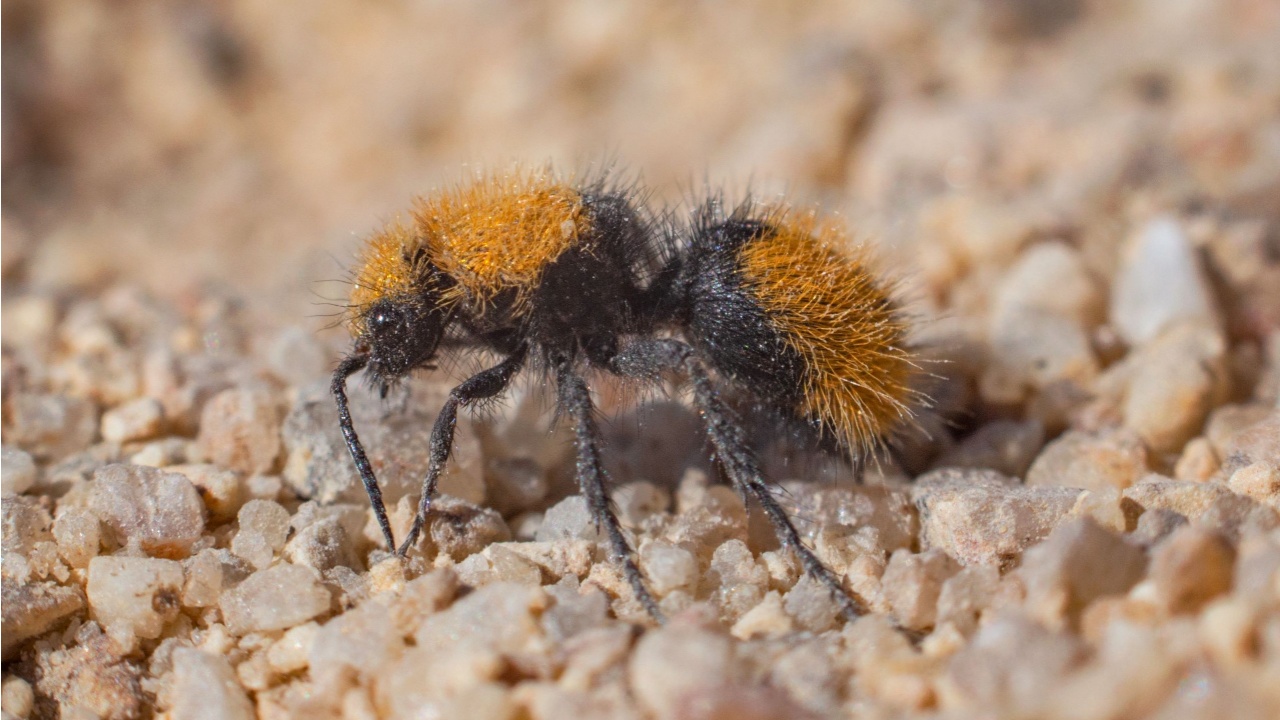
Velvet ants, sometimes known as “cow killers,” are actually a type of wasp with about 8,000 species. Despite their name, they are not true ants.
The female velvet ant is wingless and covered in bright, velvety fur. Their coloration can vary from scarlet or orange to black, white, silver, or gold. This vibrant appearance is a warning to predators.
Males have wings and seek out females on the ground. The sting of a velvet ant is extremely painful, giving them their fearsome nickname.
Becky is a fervent wildlife enthusiast and pet care expert with a diploma in canine nutrition. Her love for animals stretches beyond the domestic, embracing the wild tapestry of global fauna. With over a decade of experience in animal welfare, Becky lends her expertise to OutlandishOwl through insightful articles, captivating wildlife information, and invaluable guidance on pet nutrition. Her work embodies a deep commitment to understanding the intricate lives of animals and a passion for educating others on sustaining natural habitats. Becky's hands-on conservation efforts and her knack for translating complex dietary science into practical pet feeding tips make her an indispensable voice for creatures great and small.

